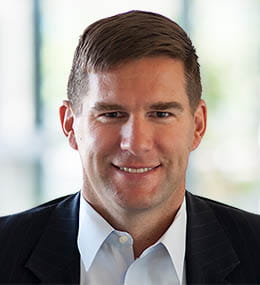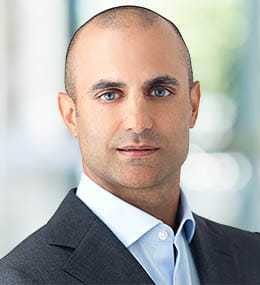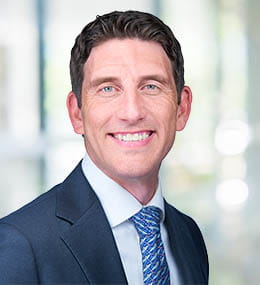Four Key Takeaways from GSOF Modern Warfare Week 2023
Subscribe to Industry UpdatesFour Key Takeaways from GSOF Modern Warfare Week 2023
Subscribe to Industry UpdatesStout’s Aerospace, Defense, and Government Services team provides insight into the latest trends in the special operations contractor community.
Stout’s Aerospace, Defense, and Government Services Investment Banking team recently attended the Global SOF Foundation (GSOF) Modern Warfare Week conference, held at Ft. Liberty in Fayetteville, North Carolina. The conference featured discussion sessions led by senior U.S. Special Operations Command military and civilian leadership, exhibits by leading private companies supporting U.S. special operations forces (SOF), and a technology demonstration day held at a training range.
The speaker sessions and Stout’s extensive discussions with defense industry players highlighted several notable themes.
1. Artificial intelligence (AI), machine learning (ML), and cloud-based technology offerings are critical to the SOF ecosystem – but require agile and rapid delivery methods.
The transformational potential of AI/ML and cloud-based IT is far from a new theme across the defense and government services industry. Commercial-based approaches to these technologies are being increasingly applied to government and public sector use cases.
However, in the SOF community and closely adjacent customer sets (i.e., the intelligence community [IC]), a commercial model for procuring these services is not always a viable option. Particularly in the still nascent areas of generative AI, or the application of ML to big data sets, long development and deployment cycles driven by contractors are not compatible with time-sensitive national security missions.
Some companies are solving this by taking a tailored, highly flexible approach to delivering these technologies to SOF and IC customers. One of the exhibitors at the conference provides AI/ML frameworks and tools to national security customers in an unclassified context. The end user is given complete control of their own data sets throughout the process, and they can load, manipulate, and control those sets directly with support from the company as required or desired. This approach results in far fewer concerns around proper access to classified information and gives the military or intelligence end users more ownership of the process.
Another company at the conference offers cloud-based, off-the-shelf abilities to rapidly configure secure and traceless communications networks for national security missions. Rather than taking a traditional, commercial approach to cloud capabilities and adapting it for Tier-One defense and intelligence users, the company has started with the mission requirements and tailored their technology offerings from there. Like others, they can predominantly provide their solutions in an unclassified environment, providing additional flexibility both for customers and internally with their own talent management and recruiting.
2. Unmanned platforms – particularly unmanned aerial vehicles (UAVs) – continue to receive increased attention and investment across a variety of mission sets and form factors.
Like the AI/ML and cloud phenomenon, the use of unmanned platforms in a SOF or broader defense context is nothing new; after all, the first MQ-1 Predator was fielded by the U.S. military almost 30 years ago. However, the more recent proliferation of unmanned technology around the globe, coupled with budget and manpower headwinds in the U.S. and a shift back toward preparing for peer/near-peer conflict, has led to a continued increase in the importance of unmanned systems.
UAVs were a major focus of the GSOF conference, with nearly a dozen companies demonstrating UAV platforms or their unmanned systems engineering and integration capabilities (both at their exhibit booths and out on the training range). Several of the speaker sessions focused on the role of unmanned systems in modern special operations conflicts as well. Recent or ongoing operations in Ukraine, Nagorno-Karabakh, and Israel/Gaza have continued to prove the disruptive and asymmetrical abilities of lower size, weight, and power (SWaP) and lower-cost UAV platforms.
More specifically, various discussions at the conference coalesced around three specific dynamics:
- Modern close-proximity- conflicts such as those in Ukraine and Gaza are leading to increased demand for smaller, lower-cost, more easily replaceable UAV platforms in which range and payload capacity are of secondary importance to other tactical considerations.
- The potential for peer conflict in the Indo-Pacific is driving a desire for UAVs with ever-increasing levels of endurance (flight time, range) and payload/power capacity, particularly for sensor systems.
- More players are entering the SOF and broader U.S defense landscape for UAVs from the commercial and agricultural markets, bringing with them unique platform and price offerings, but also a lack of customer intimacy and directly relevant past performance.
3. Commercial-off-the-shelf (COTS) approaches and associated cost efficiencies are coming into increased focus given near-term budget pressures.
Following an extended period of budget growth during the Global War on Terror, the U.S. Special Operations Command (USSOCOM)’s budget has been flat to decreasing the last few years. Most recently, U.S. Army Special Forces are said to be facing perhaps up to 10% budget cuts over 2025-2029, based on the Army’s latest long-term budget planning processes. More broadly, the entire U.S. Federal government budget – both defense and non-defense spending – is likely to be subject to mandatory 1% budget cuts in FY2024 if Congress does not pass all 12 appropriations bills by April 30.
These budget headwinds, coupled with a frequent SOF preference to leverage COTS-based solutions for certain mission sets due to faster development and procurement cycles, are driving more discussions around COTS products.
There were multiple companies present at the conference that specifically offer a commercial-based solution to tactical communications networks, including:
- Commercial satellite data feeds and fusion with data analytics
- COTS-based tactical SATCOM terminals – offered at smaller form factors and lower cost per unit than traditional providers
- COTS-based, 5G-enabled tactical routers – also offered at smaller form factors and lower cost per unit than incumbent systems (even other COTS-based offerings)
Notwithstanding the earlier commentary around the importance of mission-specific AI/ML and cloud solutions in the SOF community, COTS-based offerings remain an integral part of the special operations procurement landscape. Companies that can provide more economical solutions to enduring tactical requirements will be better positioned for success in the new budgetary environment.
4. An environment of information overload is prompting an emphasis on simplifying and streamlining cognitive demands on special operators.
The exponential growth of data feeds, sensors, and communications at the tactical edge has created a modern battlefield environment where any soldier, particularly special operators, is faced with information overload. Attempting to collect, process, transmit, receive, and act upon the vast amount of data generated by today’s U.S. military is pushing soldiers’ bandwidth in ways that may deteriorate mission effectiveness and overall mental health. To ease the cognitive and communications demands on special operations forces, the private sector is taking a variety of approaches ranging from novel technology to fundamental doctrine.
One example from the conference was a demonstration of voice-based autonomous control software. This technology is designed to allow soldiers to use intuitive conversational and/or command-based dialogue to control unmanned systems, leveraging human-machine interfaces. This frees up special operators from needing to hold and use physical controls while piloting UAVs on the battlefield. Other companies were exhibiting tactical radio interfaces that enable soldiers to change frequencies, manage power levels, and handle general radio operations in a more streamlined, hands-free manner.
On the services side of the spectrum, there were companies at the conference that provide hardware-agnostic training – including foundational coursework in how to best use the Android Tactical Assault Kit (ATAK) software system. While ATAK is now ubiquitous across the military for tracking the real-time locations of allied forces and enabling increased situational awareness, many conference attendees remarked that they would benefit from a better baseline of familiarity with the software. This sentiment and other conversations at the conference reflected a continued appreciation for the importance of the human element of special operations – as reflected in one of the SOF Truths, “Humans are more important than hardware.”
Stout’s Aerospace, Defense, and Government Services team has experience supporting companies focused on serving special operations forces, as well as the Intelligence Community and broader defense and civilian agencies. We would welcome the opportunity to discuss these conference takeaways as well as how we can assist with your business’s growth and strategic objectives.









